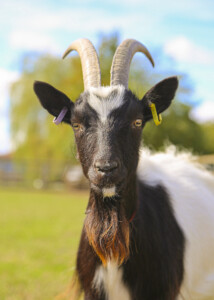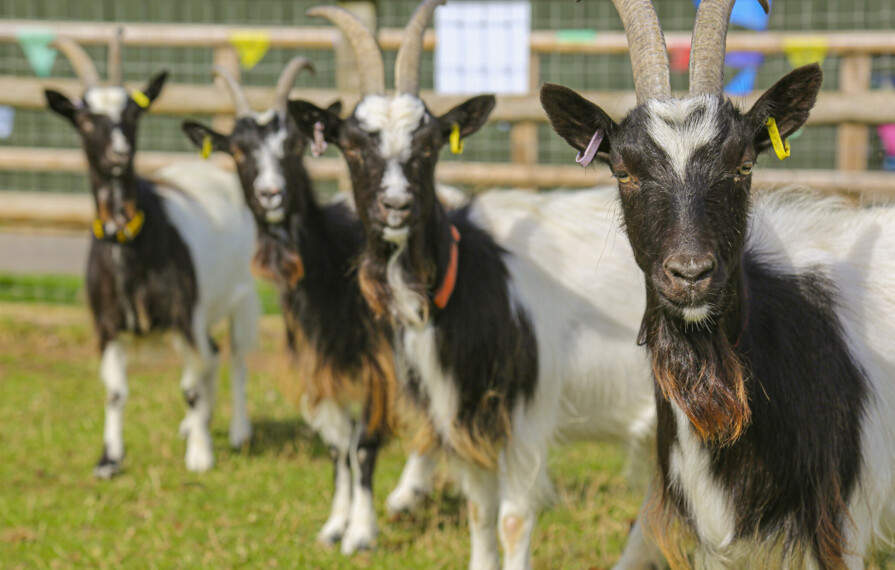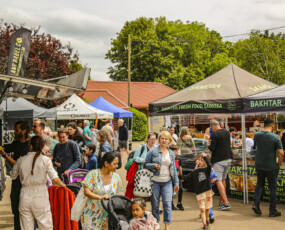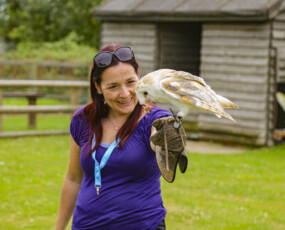Here at Barleylands we are very proud to be recognised as an approved Rare Breeds Farm Park by the Rare Breed Survival Trust (RBST).
This means that we have a variety of different rare breed animals, including Wiltshire Horn Sheep and Berkshire Pigs. But today we want to tell you a bit more about the Bagot goat, and when we tell you they are an interesting breed – we are not kidding… (pun totally intended). The Bagot is believed to be Britain’s oldest breed of goat, with the first account being from a herd at the Blithfield Estate in Staffordshire owned by Sir John Bagot in 1389. Which means that they are an ancient breed!

The Bagot goat’s attractive appearance and fascinating character, together with its long history, has helped it to find favour with its supporters, who appreciate both the value and the importance of conserving one of our rarest native breeds. After more than 600 years of genetic isolation there is still a huge lack of information in the history of these goats.
Therefore we are delighted to be a part of the European Goat Project from Cardiff University. The project is looking at five UK breed’s of goats; Bagot, Golden Guernsey, Old English, Cheviot and English Goat to determine the origin of the UK Native goat breeds. To take part 20 goats from each breed were chosen, 6 of them from our own Bagot goat herd. These individual goats had a nose swab (a bit like a COVID test for humans) and a blood sample taken by our vet. The samples were then sent on to Italy for analysis. The results will take a little while to come through but it might help to explain the origin of each breed within the UK and potentially within Europe!
Watch this space for more information! To visit our goats click here.





